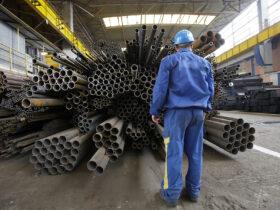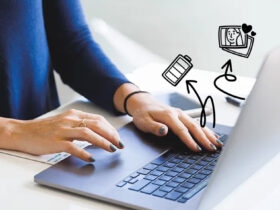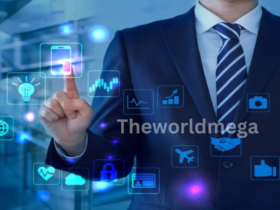The 21st century is the era of technological advancement and path-breaking innovations, which have led to significant changes in every industry. The revolution has also approached all major financial markets, including the international currency market.
The forex market was believed to be there in the 19th century as it took its modern form with the gold standard. However, the forex trading trajectory has changed over the years, and the forex market we see today is very different from its traditional form.
In this article, we will look back on the history of forex trading. We will see how automation has revolutionized the trading industry, making it more accessible for traders and investors who want to invest in Forex using MAM/PAMM accounts. Technology has simplified the process for everyone. We will also discuss the background processes of trading and the future of forex trading.
The history of forex and how trading was done in the past
To talk about the history of forex trading, we need to go back to the 15th century. This was before the concept of forex trading was born. The use of money as a medium of exchange was in its infancy during this era. Chinese travelers using money will exchange it for gold to buy something from local people.
The Medici banking family in Florence even wrote the amount of the home and foreign currency they held while trading outside of Italy. During that time, foreign exchange was only essential for businesses or individuals engaging in overseas transactions. But today, the same forex has transformed into the largest financial market, offering a vast amount of opportunities to make profits from trading.
Retail traders can easily access the market through online forex brokers and online platforms and get started with buying and selling currency pairs. The exchange rate fluctuations are the very foundation of forex trading. It is more about analyzing the market situation and opening a trade position to gain from the possible fluctuation in exchange rates or currency prices.
If your analysis and calculation turn out to be correct, you will be making profits by winning trades. But if you are wrong and the market moves in the opposite direction, you will lose the money you risked in the trade.
Before getting into currency trading, you are supposed to gain enough knowledge and develop your skills by indulging in learning and practice. You need to set clear goals and devise a trading plan. You also need to build a risk management system, as the market risk will always be there whenever we place a trade.
However, not all of us can make sound trading decisions on our own, or we may struggle to manage the trading activities due to time constraints. This is how trading automation and dependence on technology became common in the forex world.
How has technology and automation revolutionized forex trading?
When we think about technology usage in forex trading, the first thing that comes to mind is mechanisms like automated trading systems and forex bots that trade on your behalf. But before learning all these advanced techniques of trading automation, you need to understand the fact that technology is crucial in every step of trading.
Even someone trading on their own needs to sign up with a broker and log into a technology-driven trading platform. The forex market is the perfect example of a decentralized OTC marketplace where all trading activities are carried out online. Thus, one cannot access it unless they rely on technology and have a stable internet connection.
The use of technology in its simplest form can be seen in various trading tools that we use on a daily basis. Most brokers and trading platforms offer trading calculators like profit calculators, pip calculators, margin and position size calculators, etc. These are algorithm-based tools that automate the calculation process, saving us time and energy.
It also eliminates manual errors by providing quick results that take the real-time exchange rates into consideration. You can find various types of trading calculators, such as pip calculators, profit calculators, and position size calculators. Profit calculators are helpful in planning your trades based on potential profits/losses.
Now, trading automation is not confined to using Expert Advisors or trading bots in this era. Even modern trading solutions like copy trading utilize the potential of automation as the trades of the master trader are simultaneously copied to the followers’ accounts in real-time.
This cannot be done unless the platform uses an advanced technological system for mirroring the trade positions. This is what we refer to as auto-copying. Another innovative solution that can benefit inexperienced or passive traders is forex account management services.
Managed forex account services such as MAM/PAMM accounts were introduced to reduce the complexity of trading, making it doable for anyone, irrespective of their skills, experience or availability during a trading session.
If you choose to be an independent and active trader, you will have to take responsibility for all your trading decisions. This applies to all types of traders, whether they trade manually or execute trades with an automated system. You will have to devise a strategy and choose a method of analysis for finding ideal trade setups.
All of these require a good amount of knowledge, and the process can also be time-consuming if you don’t have enough understanding of how the market works or lack experience, then depending on an automated system or trading bot will not be a good idea as you don’t know how to manage the risk.
Behind the scenes of a trade in forex
In order to fully understand the technological processes that are necessary for engaging in forex trading, you will have to have an idea about the behind-the-scenes of a trade. For this, you will have to learn about the functioning of the forex market as a whole. As I said earlier, the forex market is very decentralized, but it is also very transparent with the OTC system.
Traders like you and me cannot access the market on our own, and we will have to depend on forex brokers to connect us to the currency market by providing sufficient liquidity. There will be two types of forex brokers based on how they bridge the gap between traders and markets.
The first one is market maker brokers, who act as counterparties for their traders, and this is what we refer to as the dealing desk. The spreads of market maker brokers tend to be higher, but not many top brokers provide this type of execution.
The next category is STP/ECN brokers, who team up with liquidity providers aiming to provide execution without dealing desk intervention. The spreads of ECN brokers are always the lowest, and they also provide fast execution of trades with an Electronic Communication Network.
The future of forex trading
Those who aspire to be a part of the dynamic forex market must be aware of the fact that it is ever-changing and unpredictable. The currency market keeps growing and expanding rapidly, and the future of forex trading looks promising.
Since the market is evolving and changing, more innovative trading solutions and technological advancements are needed to thrive in this lucrative space. We can already see how Artificial Intelligence has taken the world by storm.
We can see its influence in the world of forex trading, too, and we can expect it to advance more in the future, becoming an integral part of the trading industry. Many traders have this misconception that such innovative solutions can only be used by those who are tech-savvy. However, these days, the key purpose of technology is to make trading more accessible for everyone, giving a fair chance to all, even if they are beginners.
Final Verdict
Technology has always been an inseparable part of the trading process. The decentralized nature of the forex market emphasizes technological aspects as they are essential for accessing the market in real-time. It has completely revolutionized the trading industry and will continue to do so in the future as well.













Leave a Reply